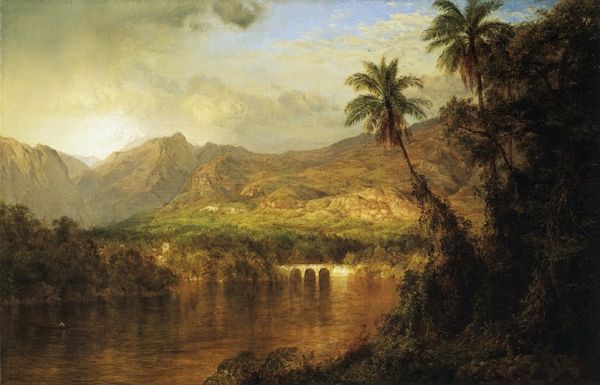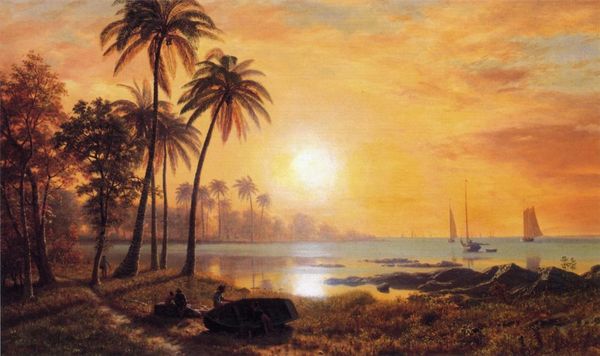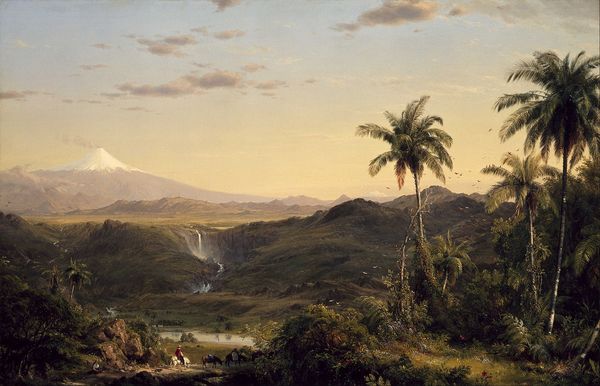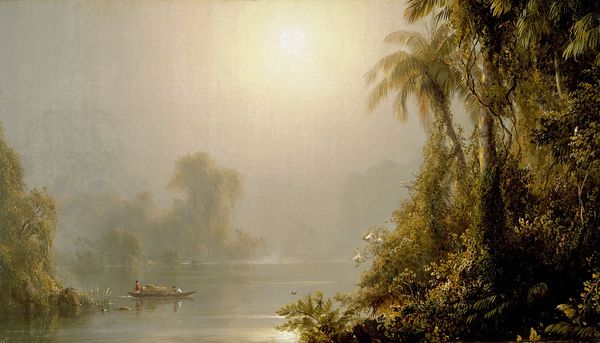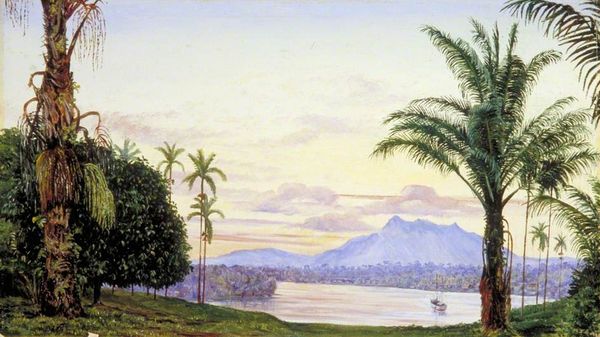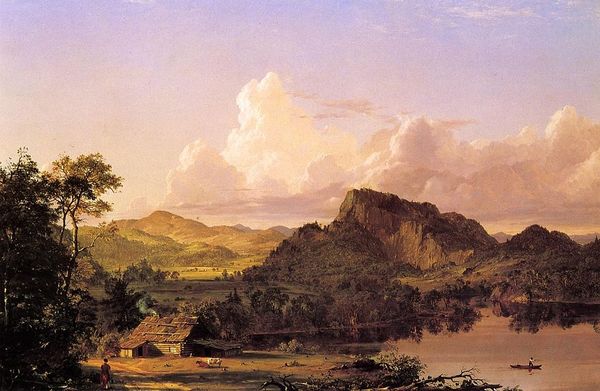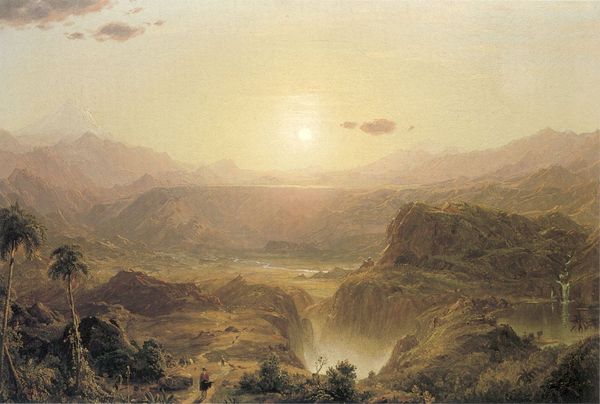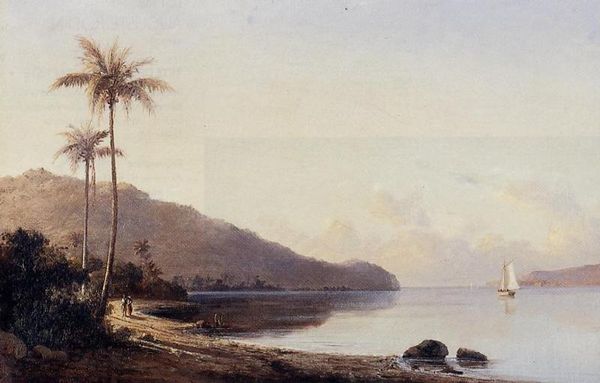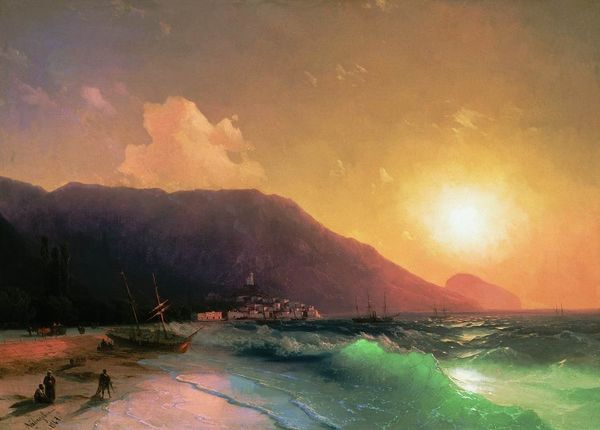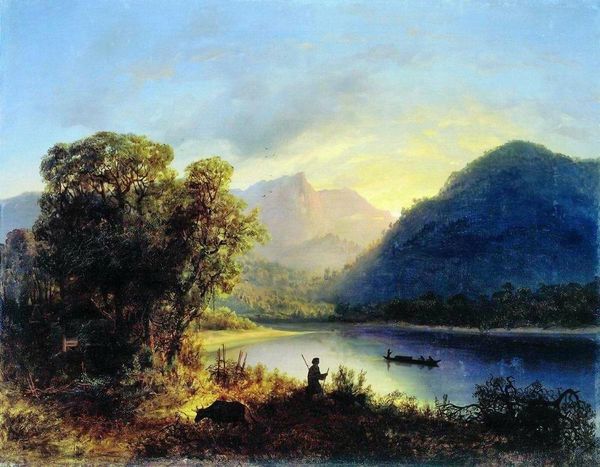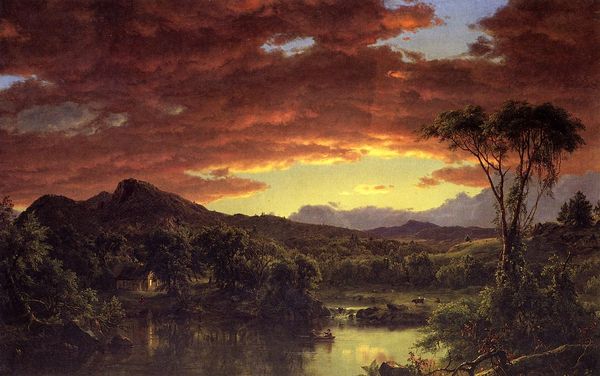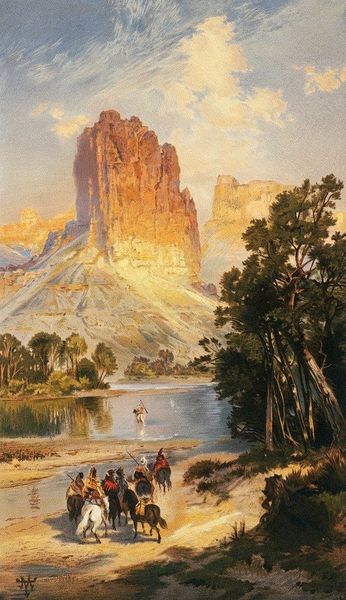
#
tree
#
sky
#
mother nature
#
countryside
#
landscape
#
landscape
#
impressionist landscape
#
nature
#
landscape photography
#
seascape
#
natural-landscape
#
nature heavy
#
coastline landscape
#
nature
#
watercolor
Copyright: Public domain
Curator: I’m struck by the overwhelming feeling of humid, golden light emanating from this landscape. It’s almost palpable. Editor: Indeed. We are looking at Frederic Edwin Church's "In the Andes," painted in 1878. Church, a key figure in the Hudson River School, was captivated by the South American landscape. He believed these landscapes contained a wealth of information for both scientists and artists. Curator: I’m curious about his process. How did he capture this light and the sense of place? It seems to me he wanted to suggest this region had not yet felt the pressures of imperialism or colonial intervention. Editor: His process involved extensive sketching and studying of the local geology, flora, and atmosphere, ensuring that the specificity of place was felt. While it’s true the piece invokes the idea of an untouched, sublime landscape, we should acknowledge the context of this painting—Church’s travels were supported by investors eager to exploit the region's resources, a venture in which there would have been colonial pressures in terms of material sourcing and logistical organization. We can discuss, then, the ethics surrounding its materials— canvas, pigments, and oils that facilitate its representation of this place. Curator: Absolutely. It's essential to unpack the complexities. Thinking about materiality and representation, can we look closely at the textures of the painting, or consider what he means when depicting palm trees so prominently in this foreign terrain? Editor: Notice the layered brushstrokes used to describe the foliage in the foreground. The density and careful blending give the sense of the lush, humid vegetation clinging to the land itself. The effect created by layering warm colors invokes a similar warmth to our perception of a space as beautiful and ripe. This visual rendering is no small feat and speaks to Church’s skill with oils and a dedicated method of preproduction by working from sketches in situ. Curator: Yes, and thinking about those materials adds another layer. The exploitation and extraction necessary for creating such a sublime image complicates the way we can consider this “natural landscape.” It's almost an idyllic depiction with very fraught implications. Editor: Certainly, examining both the materials and the making process gives a nuanced picture to our understanding of this powerful piece of art, "In the Andes," today. Curator: Exactly. Situating works within larger cultural and social landscapes transforms the meaning we might take away from these works— perhaps into action.
Comments
No comments
Be the first to comment and join the conversation on the ultimate creative platform.
